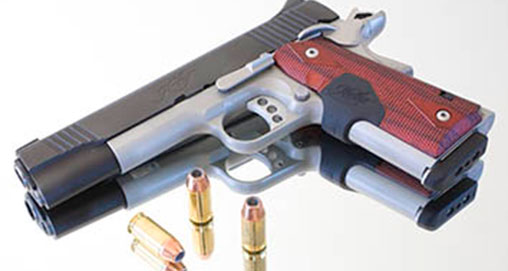
When I lived alone on the Blue Ridge in Virginia, there were at least two occasions in which I was convinced a perp had broken into the house while I was asleep. You know the scenario-loud noise somewhere wakes you and your pulse is suddenly that of a hummingbird.
If you’re like me you know where your home-defense gun is, and have mentally rehearsed how to get it in hand fast, along with the phone to dial 9-1-1. Unfortunately, the first scary “bump in the night” I wasn’t in the habit of staging the handgun in the same direction every night. So when I went to grab it in the dark (remember, darkness can be your friend), I wound up chasing the gun across the nightstand.
Now when the lights go out, the backstrap is parallel to my sleeping position, muzzle pointing toward an outside wall, and on the left side of the bed where I can grab it efficiently in an emergency. I’ve unloaded the gun, staged it, and practiced reaching it in the dark enough times that my arms and hands have the move memorized. Some might consider that paranoid, but during a home invasion criminals will be moving fast, very fast-and the practice could come in handier than knowing the names of the latest American Idol contestants.
Another advantage of rehearsals is the fact you can identify potential disasters before they strike. To get my point of aim toward the bedroom door (at the right side of the room), I had to move it across the end of the bed. And if things happened fast enough that I was still lying there, there was a real good chance I’d muzzle my little piggies.
Had I not staged the unloaded gun and worked through the exact move with the lights on—and the noises really turned out to be bad guys before my discovery—at least one of those piggies might have good reason to cry “wee, wee, wee” in my home.
Don’t discover your well-conceived plan has some shortcomings when seconds count. A little practice irons out those problems and develops the kind of muscle memory that could save your life (toes and loved ones).























![Winchester Comm[94]](/media/1mleusmd/winchester-comm-94.jpg?anchor=center&mode=crop&width=770&height=430&rnd=134090756537800000&quality=60)
![Winchester Comm[94]](/media/1mleusmd/winchester-comm-94.jpg?anchor=center&mode=crop&width=150&height=150&rnd=134090756537800000&quality=60)












